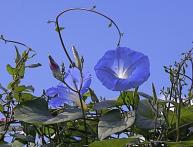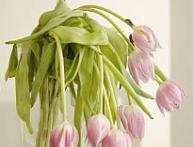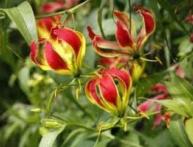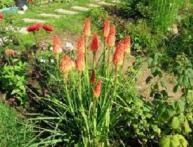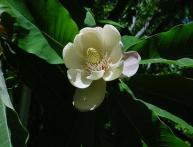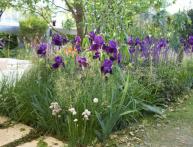How to fertilize a phalaenopsis orchid: useful tips
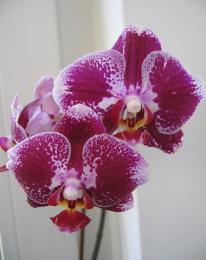
The orchid is a truly feminine flower. In the hands of a male recipient, a flowerpot with an orchid would look ridiculous. Although there is one man known who spent two hours morning and evening in his own orchid greenhouse - Nero Wolfe, the hero of Rex Stout's detective novels.
According to the author, the unique detective looked after them very carefully, and orchids brought him not only aesthetic pleasure, but also victories in exotic flower competitions in New York. Today, orchids are sold in almost every flower shop, representing a sophisticated, elegant gift.
Of all the types of orchids, the most popular and affordable, both in price and in maintenance requirements, is phalaenopsis. This sophisticated and delicate flower has one wonderful property: it blooms mainly in winter, and flowering lasts up to six months.
Content:
- Basic rules for keeping phalaenopsis
- Secrets of fertilizing Phalinopsis
- How to fertilize phalaenopsis
- When is it time to fertilize?
Basic rules for keeping phalaenopsis
Phalaenopsis varieties sold in stores are planted in transparent pots filled with pieces of pine or pine bark; miniature forms are planted in sphagnum moss. This is the most suitable soil for epiphytic plants. It provides almost natural conditions: phalaenopsis grows by clinging to branches or tree bark with its roots.
The roots need sunlight and good ventilation, so this type of orchid is planted in transparent pots with numerous holes.Some exotic flower lovers grow it on a piece of bark - a block. It is better to place the new resident on a western or northern window.
Secrets of fertilizing Phalinopsis
As a rule, a flower reaches its owner in a blooming state. How to save it? The mistake of a novice owner of a phalaenopsis, like any gardener, will be the opinion that regular fertilization of the plant will ensure good growth and abundant flowering of the orchid. In order for the plant to please the eye with tight shiny leaves and magnificent flowers, you need to know the subtleties of phalaenopsis fertilizer.
- Do not fertilize the plant brought from the store for a month: in the name of active flowering, powerful stimulants are used in greenhouses and stores.
- It is better not to fertilize flowering phalaenopsis if you have no experience - the plant may drop its buds or the flowering period will be very short.
- At different stages of plant development, fertilizers of different compositions should be used.
- Phalaenopsis should be fertilized during the active growth of green mass every other week; in winter, once a month, when phalaenopsis is resting, do not fertilize.
- You can fertilize the plant only after watering, using wet roots.
- Do not fertilize a sick or weakened plant.
- In the cold season and in the summer heat (more than 24 degrees), it is better not to fertilize orchids.
- Complex fertilizers in the form of sticks, granules and tablets cannot be used, since they cannot be distributed evenly in the bark.
- Do not use organic fertilizers.
- Better orchid underfeed rather than overfeed.
How to fertilize phalaenopsis
In the assortment of flower shops you can most likely find a special fertilizer for orchids, but if it is unavailable, any fertilizer for indoor plants will do.When using it, you must remember that the roots are on the surface and react very painfully to fertilizer salts (especially the young root tip) and can get burned.
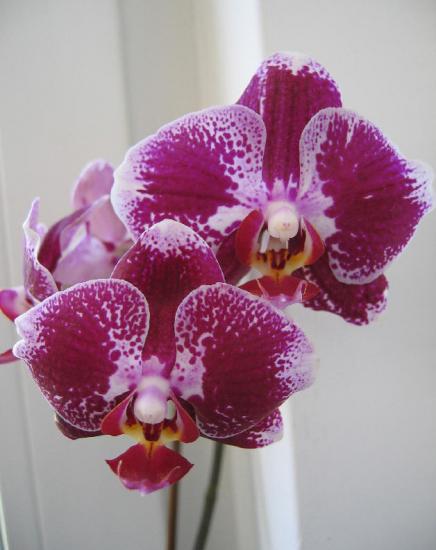
Therefore, the dose of fertilizer for indoor plants should be taken two times less than recommended on the package. The composition of the fertilizer is also indicated on the packaging and it must be understood correctly. Each element has its own significance in the nutrition, development and health of the plant:
Nitrogen (N) in the fertilizer is responsible for the development of green mass. Under natural conditions, nitrogen is independently absorbed by the plant. Phosphorus (P) regulates the processes of cell division, bud formation and seeds.
Potassium (K) is involved in almost all life processes and ensures normal metabolism.
The optimal potassium content provides the plant with lasting immunity to pests and helps to more easily tolerate a lack of moisture and lower temperatures.
In fact, this is far from the complete composition of microelements: there is also zinc, magnesium, boron and others. But the packaging indicates the content of only three main elements in a certain ratio: N:P:K. Therefore, to increase green mass, it is necessary to increase the amount of nitrogen and select fertilizers with a formula, for example, 8: 3: 5.
In preparation for flowering, that is, when growing flower stalks, the plant needs phosphorus and potassium and the formula fertilizers might look like 2:6:6. For orchids, the N:P:K formula should not exceed 16:8:8. The most convenient form of fertilizer for phalaenopsis is liquid. The packaging usually indicates “1 cap per...”, but how much to pour into this cap - to the thread or to the brim - is not clear.
Video about the Phalaenopsis orchid: care after purchase
In fact, this means level to the end of the internal thread. Without knowing this, it is very easy to increase the recommended dose of fertilizer by almost 1.5 times or more. To avoid regular overfeeding of the orchid, it is better to use the recommendations for the amount of ml of fertilizer per specified volume of water and use a syringe or measuring cup.
Experienced orchid lovers often refuse special fertilizers labeled “For orchids” and use balanced ones, which contain N: P: K in equal parts. Foliar feeding is used as an alternative to the main feeding in a number of cases:
- The root system is damaged, but the plant needs to be fertilized
- With chlorosis, that is, a lack of microelements
- During the period of active growth of the root system, to avoid burns of tender roots
Leafy feeding phalaenopsis is carried out in cloudy weather or in the evening at a temperature of at least 17 degrees. Fertilizer is applied through a sprayer to the top and bottom of the leaf, as well as to visible roots.
When is it time to fertilize?
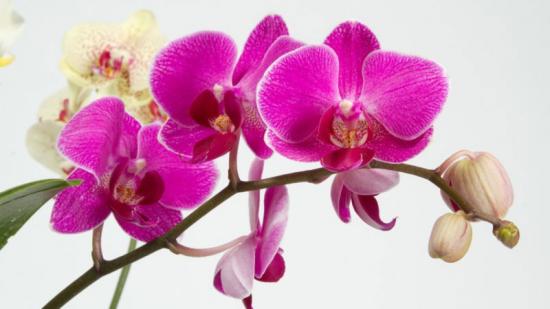
The plant itself will tell you what it is missing. For example, faded leaves with noticeable redness on the reverse side, twisted new shoots indicate a lack of phosphorus (P). Nitrogen (N) deficiency results in small, limp leaves with yellowish or light green marbled spots.
Weak stiffness of the lower leaves and their rapid death, the presence of a yellow or white rim on dark green leaves indicate a lack of potassium (K). Love your phalaenopsis and it will give you beautiful blooms.



